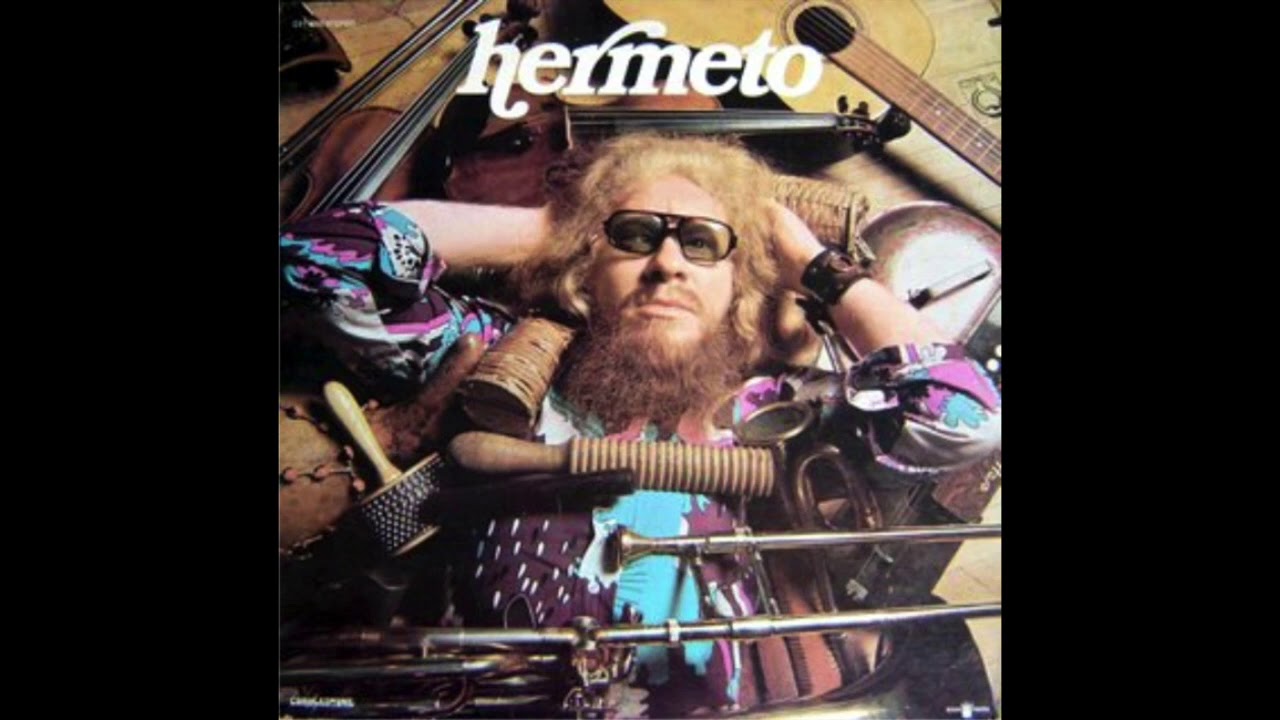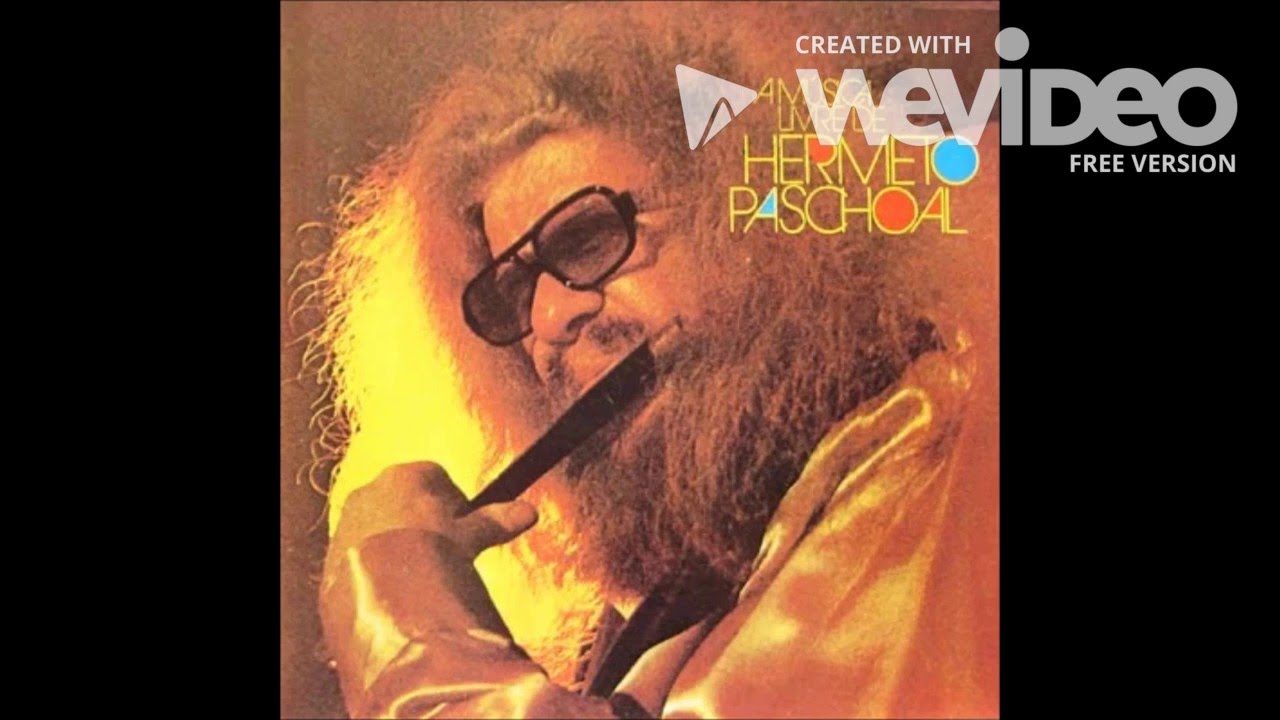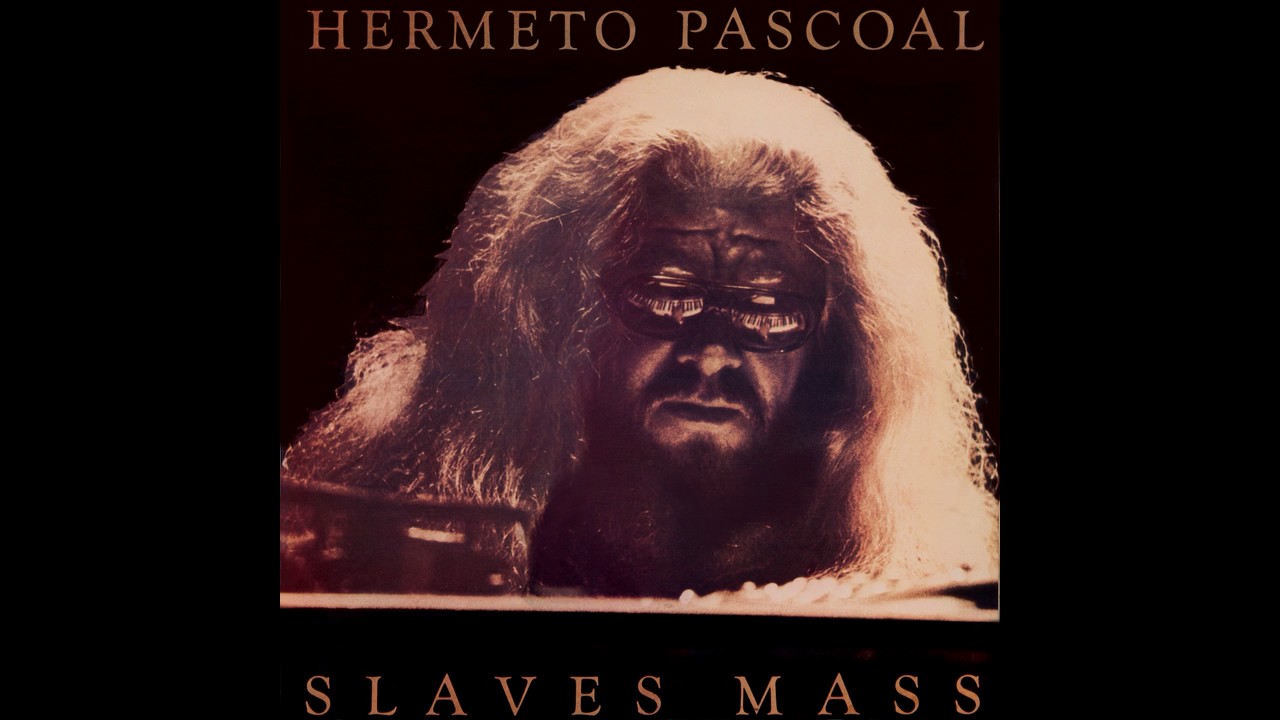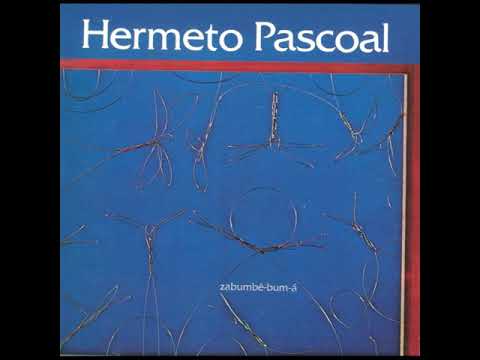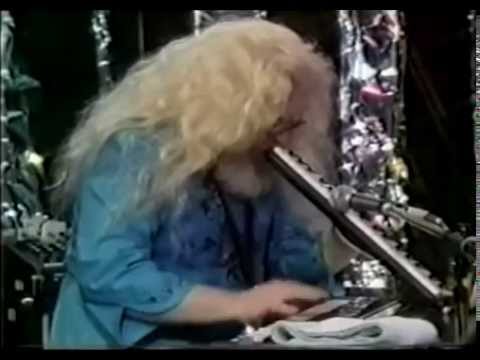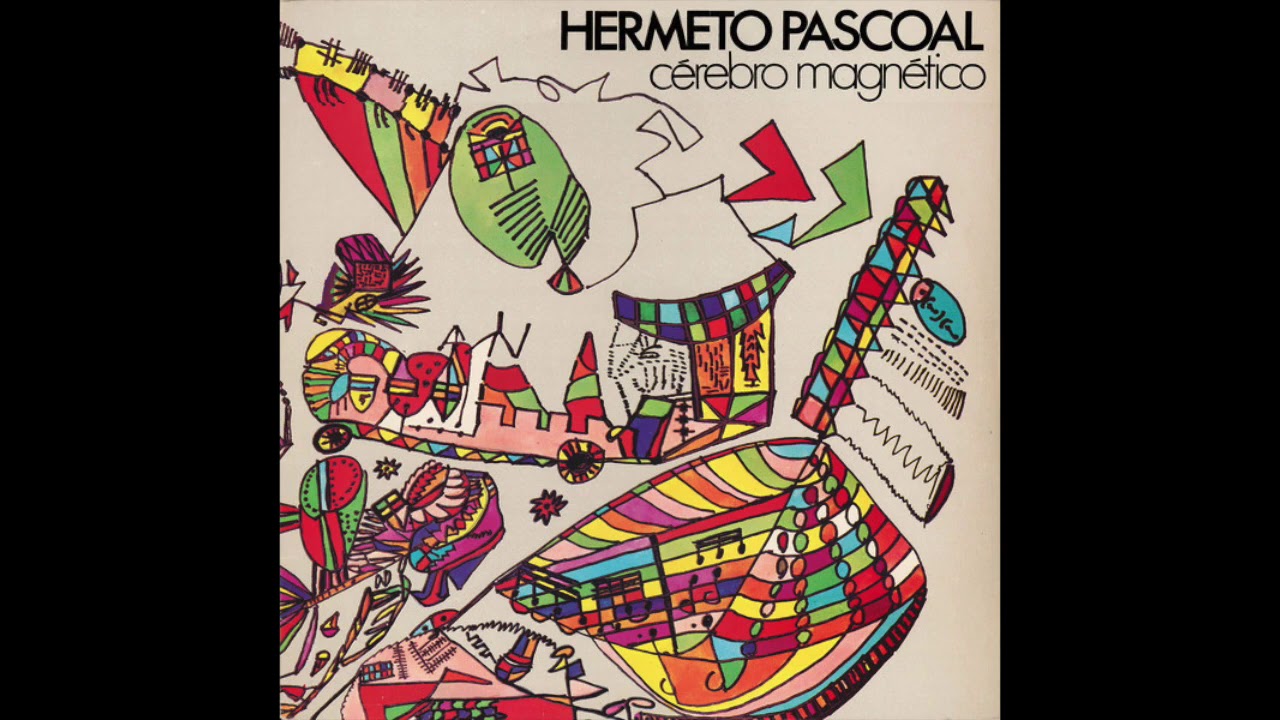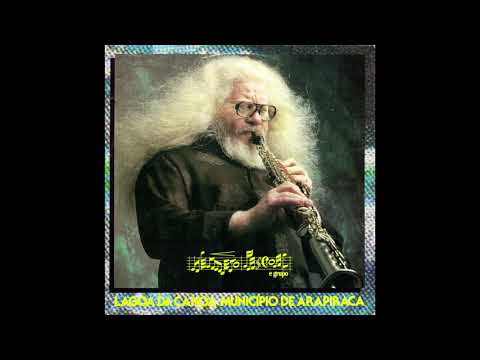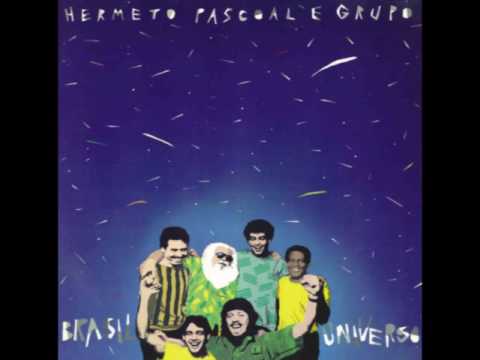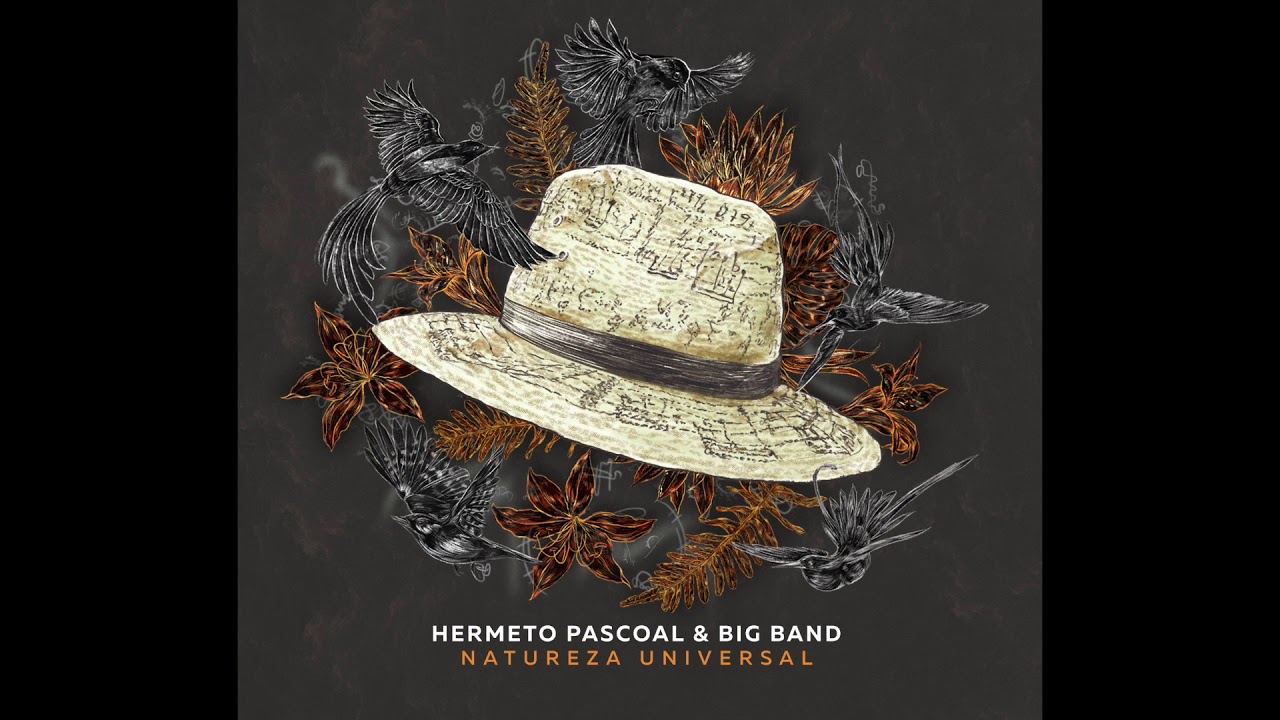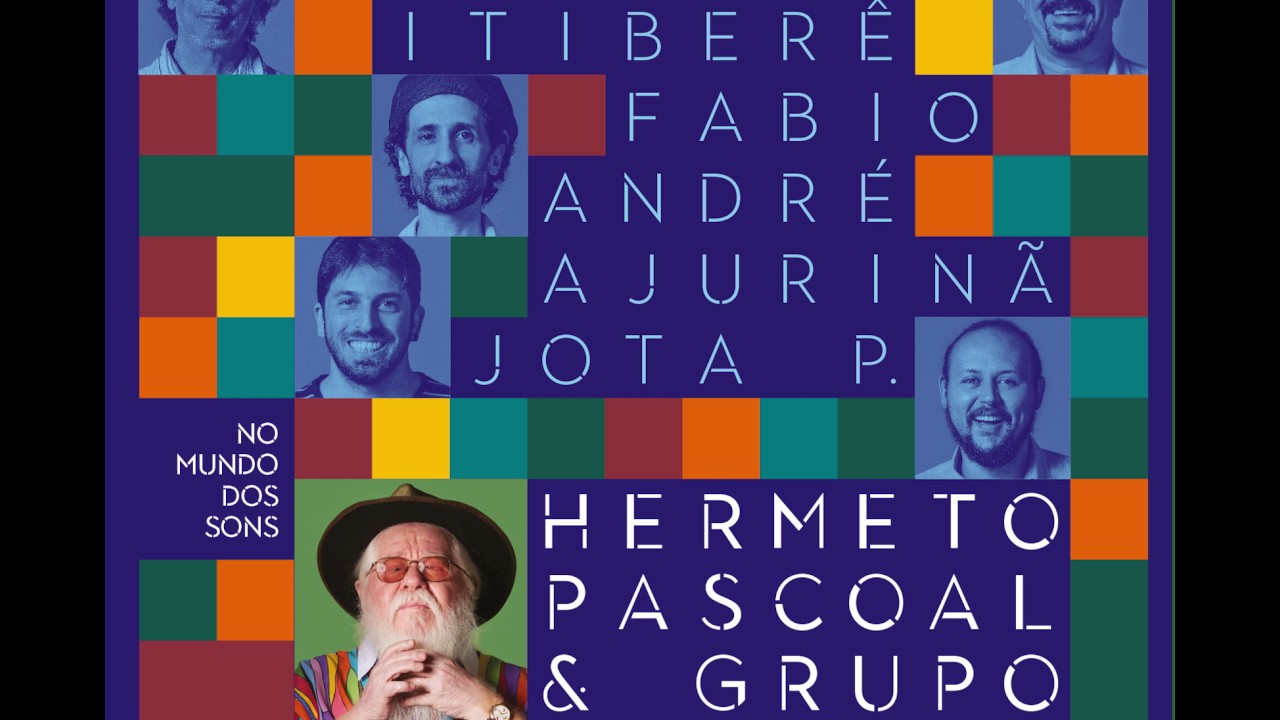Most music fans outside of Brazil, if they have heard of him at all, will likely be aware that Hermeto Pascoal composed and played three pieces on Miles Davis’ Live Evil, and that Davis allegedly once called Pascoal “the most impressive musician in the world”. Davis also referred to Pascoal as ‘Albino Loco’ after a playful boxing match during which Pascoal distracted Davis with his unfocused eyes and sucker punched him.
Pascoal, an albino who is also affected with strabismus and is legally blind, recalled: “One of my eyes pointed this way, the other pointed that way. Miles didn’t know which way I was looking. He thought I was looking at his right side. I focused my eyes and punched him in the face.” Such stories are the stuff of legend but in many respects are among the least remarkable aspects of Pascoal’s life. In terms of his influence on other musicians, most notably those he worked with directly, his unwavering dedication to a life of music and the uniqueness of his artistic vision, Hermeto Pascoal is almost without peer. It would not be an injustice to either musician, to compare him to Sun Ra.
Born on 22 June 22,1936 in Lagoa da Canoa, a rural area in in the state of Alagoas in the northeast of Brazil, Pascoal’s albinism meant that he was unable to work in the fields alongside his family. Problems with his vision that often accompany the condition also meant that gaining a traditional education was difficult, and he dropped out of school in the fourth grade. Since all of his family either played musical instruments or sang, and the rural environment in which he was situated provided a rich abundance of natural sounds, Pascoal hardly lacked for stimulation.
Taught by his father to play the accordion from the age of eight, Pascoal quickly attained proficiency in the instrument and by the age of eleven was playing with his brother and father at weddings and parties that often spanned the entire weekend into the following Monday afternoon. Pascoal’s grandfather was a blacksmith, and the hours he spent in his workshop exploring the sound-making qualities of different types of metals also had a profound effect upon him.
Other than the start his father gave him with the accordion, Pascoal is entirely self-taught, driven by a strong desire for self-improvement and encouraged by the fertile sound environment that surrounded him. According to Jovino Santos Neto, Pascoal’s keyboardist of many years, it was the confluence of these different sound worlds which led to the development of Pascoal’s unique musical vision. He is called ‘the Sorcerer’ by his colleagues both for his ability to take musicians beyond “the rigid system with rules and laws like the one taught in schools to this day”, and his knack for being able to make music out of items not usually known for such propensities (kettles, squeaky toys, live animals, his beard). As Santos Neto says: “Hermeto is music. He is the current. He’s like a source or a spring that’s just gushing water, and that water is music.”
‘Mourning (Velorio)’ – from Hermeto (1970)
Hermeto Pascoal released music in the late 60s with the Sambrasa Trio, Trio Novo (who became Quarteto Novo) and Brazilian Octopus. His first album under his own name featured a large ensemble of more than 30 musicians, and stakes an early claim to territories he would investigate in more detail throughout his career. A goofy looking Pascoal looks entirely at home on the cover, nestled amongst an array of instruments, but there’s no mistaking the serious intent of the opening track. Breathy sounds, like bottles being blown into, hang opaque and dreamy in the air. A murmuration of voices can be heard alongside other scraping percussive sounds. A violin or viola drones alongside a suggestion of natural, animal sounds almost obscured in the background, the rhythmic bowing of its strings almost percussive. Then out of this bed, which begs some comparison to the contemporary radical sounds of AMM, Pascoal’s flute emerges, still ghostly but distinctively his own. After a passage of piano, recalling the kind of collaged, phantom sounding instrumentation of early Faust, huge dizzying swathes of strings and brass arrive. It’s a clear statement of intent, acknowledging where experimental music is and has been, and providing a tantalising glimpse of where Pascoal intends to take it next.
‘Sereiarei’ – from A Música Livre De Hermeto Paschoal (1973)
A dissonant swell of big band sound slowly ascends to a vertiginous peak populated by pigs, geese, turkeys, chickens, ducks and rabbits, as well as some human inhabitants on drums, percussion and soprano sax. The chickens’ clucking sounds remarkably like wah-wah guitar, before the whole thing explodes into the kind of wild, sculpted cacophony usually considered the preserve of Sun Ra. By far the most chaotic sounding track on this list, unusually so for Pascoal, it nevertheless serves as a prime example of the kind of unpredictability he appears to thrive upon. Although the title translates as The Free Music Of Hermeto Paschoal, this is something of a misnomer, as Pascoal’s skills as a composer and arranger are clearly formidable throughout.
‘Slaves Mass (Missa Dos Escravos)’ – from Slaves Mass (1977)
The first of a run of three absolutely essential albums on this list and undoubtedly the best place for newcomers to start. One of the greatest jazz fusion albums of all time, although more eccentric and with a wider palette of sounds and styles than that label might usually suggest, Slaves Mass features Weather Report’s Chester Thompson and Alphonso Johnson on drums and bass respectively, and was produced by the great Brazilian percussionist Airto Moreira and his equally talented vocalist partner, Flora Purim. Moreira adds fluid layers of percussion throughout, and is also credited with coaxing the live squealing and grunting pig sounds that begin the title track. Mysterious and slightly sinister in its chant and hand drum driven vibe, ‘Slaves Mass’ could be the soundtrack to an occult ritual, or a distant cousin to Magma at their most atmospheric. Pascoal plays flutes, soprano saxophone, guitar, Fender Rhodes, acoustic piano and clavinet and Flora Purim’s wild and beautiful vocals add an extra dimension to the title track and also ‘Cannon (Dedicated to Cannonball Adderley)’. Unusually for such reissues, the extra tracks are up there with the album originals, particularly the utterly joyous ‘Open Field’, and the stellar, cosmic funk of ‘Star Trap (Part 2)’.
‘Suite Paulistana’ – from Zabumbê-Bum-Á (1979)
If I were forced to choose one Hermeto Pascoal album as my favourite, it would be this one. More folky and (in parts) experimental than Slaves Mass, but still overflowing with that feeling of ecstatic happiness all of his records have. These are consistently stunning tracks, making it hard to select any one over the others. The gorgeously sunny sounding ‘São Jorge’, with its irresistible grooves has much to recommend it, as does ‘Pimenteira’, with its delirious, swirling keyboard refrain and wild scat-vocal from Zabelê, but in the end it had to be the most experimental of these cuts, ‘Suite Paulistana’. Performed entirely by Pascoal, who overdubs percussion with flute and who-knows-what-else in the studio, there is almost an industrial element to this track. Given the rapidity and detail of the percussion, one is tempted to think that perhaps drum machines were used here, but if the pictures inside the album’s gatefold cover are to be believed, it’s more likely that its layers are constructed out of rhythms played out by hand on more ‘mundane’ objects, like table surfaces. Henry Cow’s studio improvised pieces are perhaps the only other music of this era that attempt to stake out similar territory, although Hermeto’s take is infinitely groovier and possessed of a lighter, more beguiling sense of humour. The same could equally be said of the occasional comparisons to Zappa elsewhere in Pascoal’s music.
‘Quebrando Tudo’ – from Hermeto Pascoal Live in Montreux (1979)
This video (also released as a live album) features prime late 70s footage of Pascoal. The track beginning at 12.05 is a truly far-out piece of Rock In Opposition style avant-garde jazz with some wild non-linguistic vocals from Zabelê, but it’s for ‘Quebrando Tudo’ (‘Breaking Everything’) that I’ve included it here. Playing fast alone isn’t big or clever, and music is more than just an athletic competition. But, having said that, if you’re looking for some fast, truly possessed keyboard playing, then look no further than Pascoal here. Starting gently, with some wah-wah inflected scat-singing, he quickly accelerates into the stratosphere. This isn’t about technical proficiency but rather self-possessed intensity. In this aspect, Pascoal here most resembles Sun Ra during his frenzied keyboard assaults where he would play rapid note clusters utilising his fists and elbows.
‘Festa na Lua’ – from Cérebro Magnético (1980)
Initially this album seems more accessible, less far out than its predecessors. The opening of ‘Música Das Nuvens E Do Chão’, for example, skirts perilously close to the kind of smooth jazz that is usually considerably less interesting than this. Pascoal’s own distinctive personality is always interwoven with whatever style or genre he turns his hand to, however. Whether that be playing with the listener’s expectations of time and space, as in this track, or in juxtaposing the percussion, flute and excitable vocals of what sounds like an anarchic street carnival in the next, Pascoal makes it clear that his creative intent is not limited by labels such as ‘jazz’, ‘classical’ or ‘folk’. "I don’t just play one style. I play nearly all of them," he said in an interview in the Guardian in 2011. "It comes from the universe, so… I call it musica universal”. ‘Festa na Lua’, meanwhile, is one of his most magical, moving takes on a kind of ritualistic, celebratory music, perhaps a kind of lunar invocation. A voice intones deeply, resonating with the sound of an acoustic guitar, which summons the listener to a place at first serene, but then as it picks up speed, initiates the desire to begin dancing with abandon, barefoot in that sacred space.
‘Papagaio Alegre’ – from Lagoa da Canoa Municipio de Arapiraca (1984)
I must confess to experiencing considerable excitement when I started researching this track and thought initially that it was the theme tune to the X-Men cartoon. Wow, I thought, what a way to get the youngsters into complex jazz arrangements and funny time signatures, and how well the music matches the images of the credits. Then I realised, looking into it further, that the Pascoal tune wasn’t the actual X-Men theme and what I had been looking at was a mocked-up version of the credits with his tune synched to them. The reason for this being that the theme, by Ron Wasserman, shares its main motif with Hermeto’s tune that predated the series by around eight years. Wasserman has already been hit with a plagiarism case from the estate for Hungarian composer Gyorgy Vukan, which claimed it rips off Vukan’s theme song for the 1980s crime drama Linda The Policewoman. Given that both of these tunes only share one motif with the Pascoal tune, it’s entirely possible that it is just coincidence at work here, unless Hermeto is secretly a fan of Hungarian cop shows. One thing I know for certain, the Pascoal tune runs rings around both of the others, with its intricate percussion, what sounds like a strange child singing the title refrain and wonderfully spacious sounding flute. In an ideal world, Pascoal would be the leader of a special school for gifted youngsters that took on the evils of the world with the magic of music. Perhaps that’s not entirely idle thinking: Pascoal will be backed at his Barbican show by the National Youth Jazz Orchestra.
‘Peixinho’ – from Brasil Universo (1986)
Gorgeous breathy vocals draw the listener in, swiftly swapping a sensuous swoon for a more challenging forms of systems music with rhythmic peaks delineated in flute and scat-song. Midway through the track, Pascoal’s keyboard lines proliferate wildly, threading through its basic tune and illuminating possible melodic directions like a CT scan lighting up the hidden pathways within a living organism. There is the sense that something fantastically intricate is occurring, yet this music remains a kinetic call for all dancers to rise to their feet even if, were one to try dancing to it, this ‘Little Fish’ might result in the throwing of some very complex shapes indeed.
‘Choro Árabe’ – from Natureza Universal (2017)
For anyone who was thinking “but what about The Yellow Shark”, when Zappa was mentioned earlier, then this recording of Pascoal with a 20-strong big band is for you. The music here is rather different in nature to Zappa’s excellent work with the Ensemble Modern, but both recordings offer equally tantalising glimpses of what the composers could do when presented with the opportunity of working with a larger box of crayons (although in Pascoal’s case it was something he already had experience of earlier in his career). ‘Choro Árabe’ has a classic, New York jazz style reminiscent of Charles Mingus’ larger ensemble recordings, upon which Pascoal layers expansive swells of orchestrated melody. The entire show is fantastic and is available to watch here.
‘Forró Da Gota Para Sivuca’ – from No Mundo Dos Sons (2017)
At this point, anyone whose interest may have been piqued by this article, and who may be considering attending Pascoal’s concert at the Barbican in May, might justifiably be wondering about the quality of his contemporary output. This set from 2017, Pascoal’s first recording with his band in 15 years, shows that he has lost none of the energy, originality or eclecticism of his earlier career. Fallen comrades Miles Davis and Thad Jones both have excellent tracks dedicated to them, and there really isn’t a subpar number out of the 18 on offer here. The highlight though is undoubtedly ‘Forró Da Gota Para Sivuca’. A wonderfully light flute melody flits about lithe piano and bass notes, giving the impression that it might at any moment fly free of the arrangement entirely without ever doing so, while Pascoal erupts into a barrage of scat-song and bubbling sounds like some strange animal denizen existing contentedly in the centre of his kingdom. The spirit of this piece is a supreme example of the unfettered joy that is the most consistent currency of Pascoal’s genre-diverse music. This May will be the third time I’ve been lucky enough to see Hermeto Pascoal play at the Barbican. Those lengthy shows, full of irrepressible energy, are always well attended by Brazilian ex-pat fans who make it clear that Hermeto is regarded as a national treasure in his home country. Pascoal always was a one-of-a-kind musician, but he is also one of the last living links (alongside perhaps only Herbie Hancock) to a musical world that won’t be with us forever. You should go and see him while you have the chance.
Hermeto Pascoal e Grupo Live at Planetário Da Gávea is released by Far Out records on February 4


